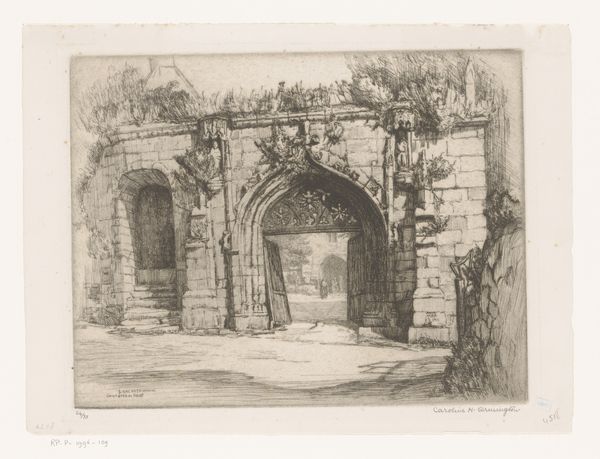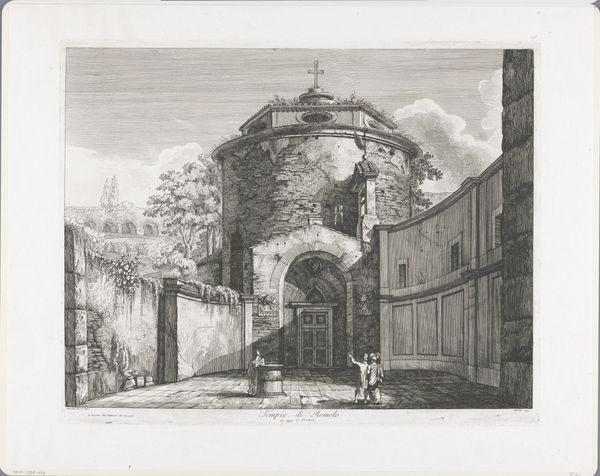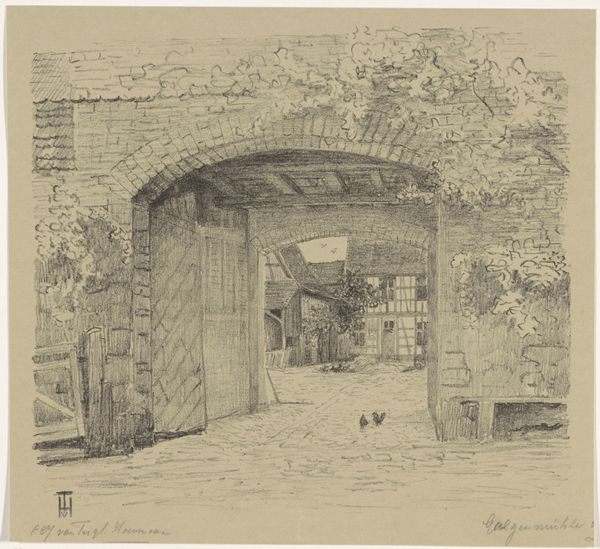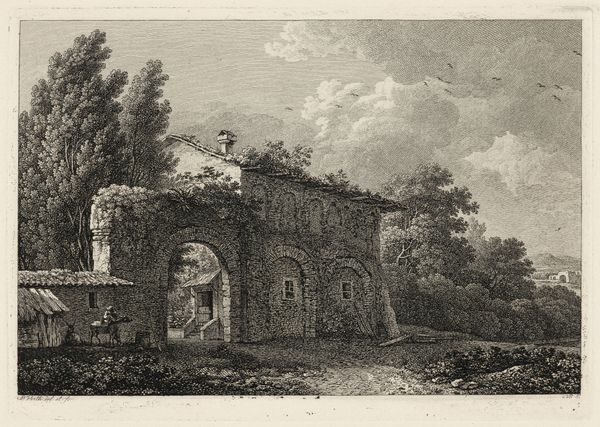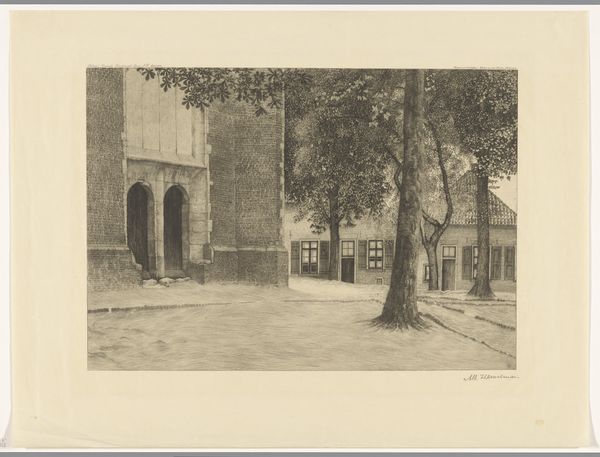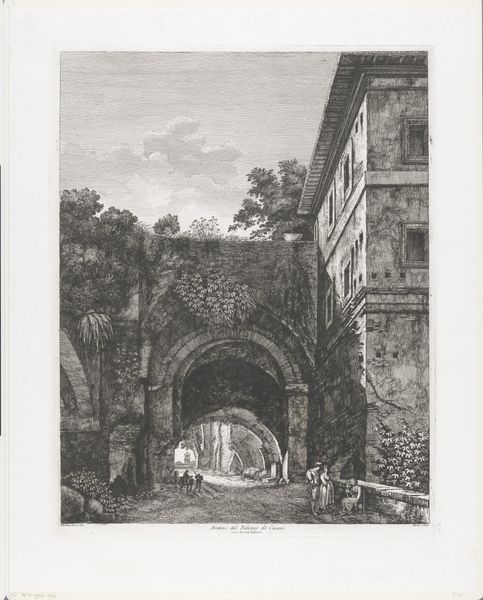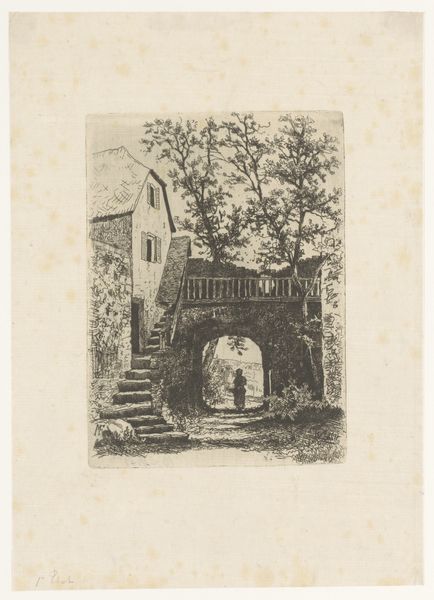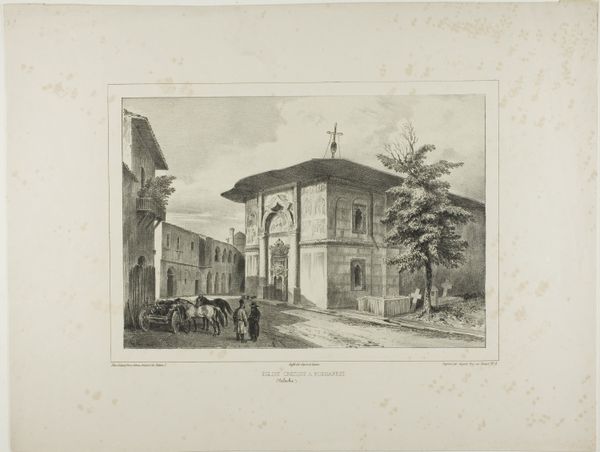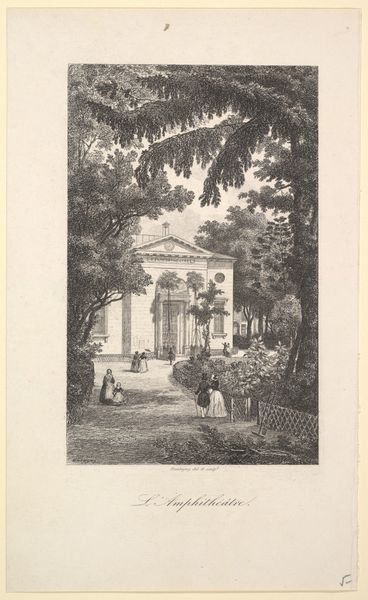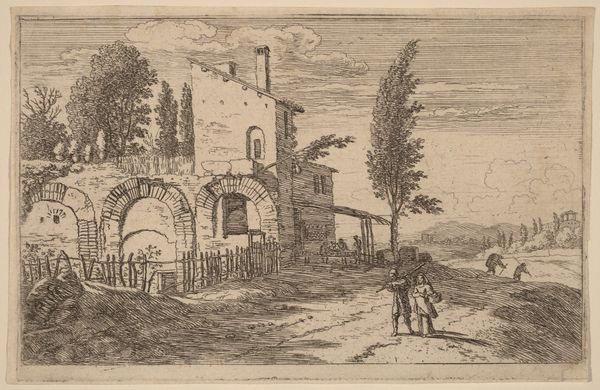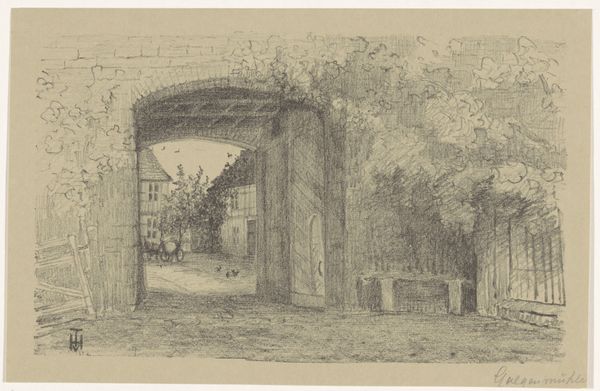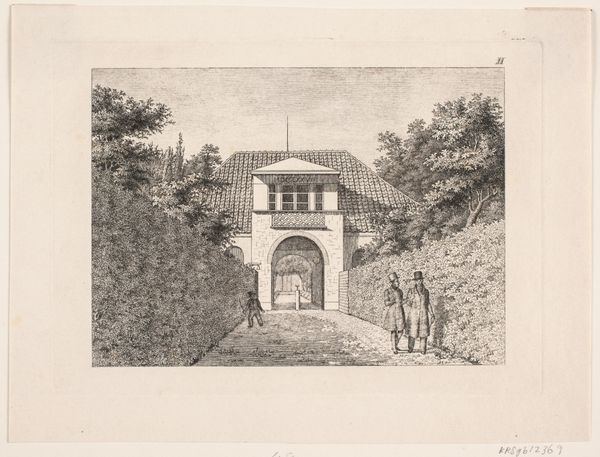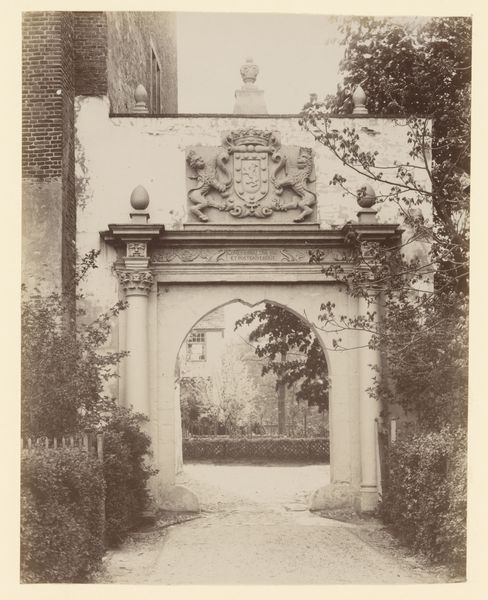
drawing, print, etching, paper
#
drawing
#
narrative-art
#
ink painting
# print
#
etching
#
landscape
#
paper
Dimensions: 199 × 260 mm (image/plate); 220 × 278 mm (sheet)
Copyright: Public Domain
Curator: Here we have "A Wayside Chapel," an etching crafted by Donald Shaw MacLaughlan in 1912. It's currently part of the collection at The Art Institute of Chicago. Editor: My first impression is one of quiet reverence. The delicate lines and muted tones evoke a sense of peace and contemplation. It feels… humble, yet solid. Curator: I find that interesting because, if you consider the period, the idea of wayside chapels themselves represents an intriguing point within the context of social movement. Rural religious structures frequently appeared to act as communal keystones of identity, places for sanctioned, apolitical organization during periods of change and upheaval. Editor: That really highlights the inherent duality, doesn’t it? This image encapsulates both spiritual solace and potential resistance. How fascinating that the sacred and the socio-political intersect in such a nuanced way, and so subtly in the horse's weariness or in the man's posture. Curator: The architectural design, though modest, displays a considered arrangement characteristic of religious sites—framing of space and providing focus via doorway. The deliberate depiction of architecture and placement of figures near religious sites are well-established methods of ascribing meaning across different cultural contexts. Editor: You know, considering its purpose and physical makeup, it seems less about ostentatious religious display and more focused on accessible spirituality— almost a rejection of organized religion, by providing an openly available venue and unadorned aesthetic? Curator: That's a thought-provoking reading, and something that adds richness to the way one may perceive the role of "landscape" depiction during moments of critical socio-historical realignment. Editor: Looking at it now, MacLaughlan’s delicate execution highlights not just the chapel as a physical entity, but more generally how spaces are implicitly influenced and given resonance within periods that exist within political landscapes. Curator: His artistry manages to make visible, I think, how profoundly culture influences a scene. It truly allows observers an aperture through which they may assess our collective consciousness. Editor: Indeed. “A Wayside Chapel” feels like so much more than a simple landscape; it’s an etching loaded with questions about faith, society, and the individual’s place within.
Comments
No comments
Be the first to comment and join the conversation on the ultimate creative platform.
